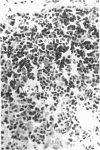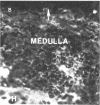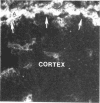Abstract
Using a monoclonal antibody (A2B5), which binds to GQ ganglioside, and tetanus toxin, which binds to GD and GT gangliosides, distinct regions of human and rodent thymic epithelial cells have been identified. The lymphoid elements of the thymus do not bind A2B5 or tetanus toxin. The A2B5 and tetanus toxin-binding cells form a network of thymic epithelial cells throughout the thymic subcapsular cortex and thymic medulla and contain thymopoietin and thymosin alpha-1.
Full text
PDF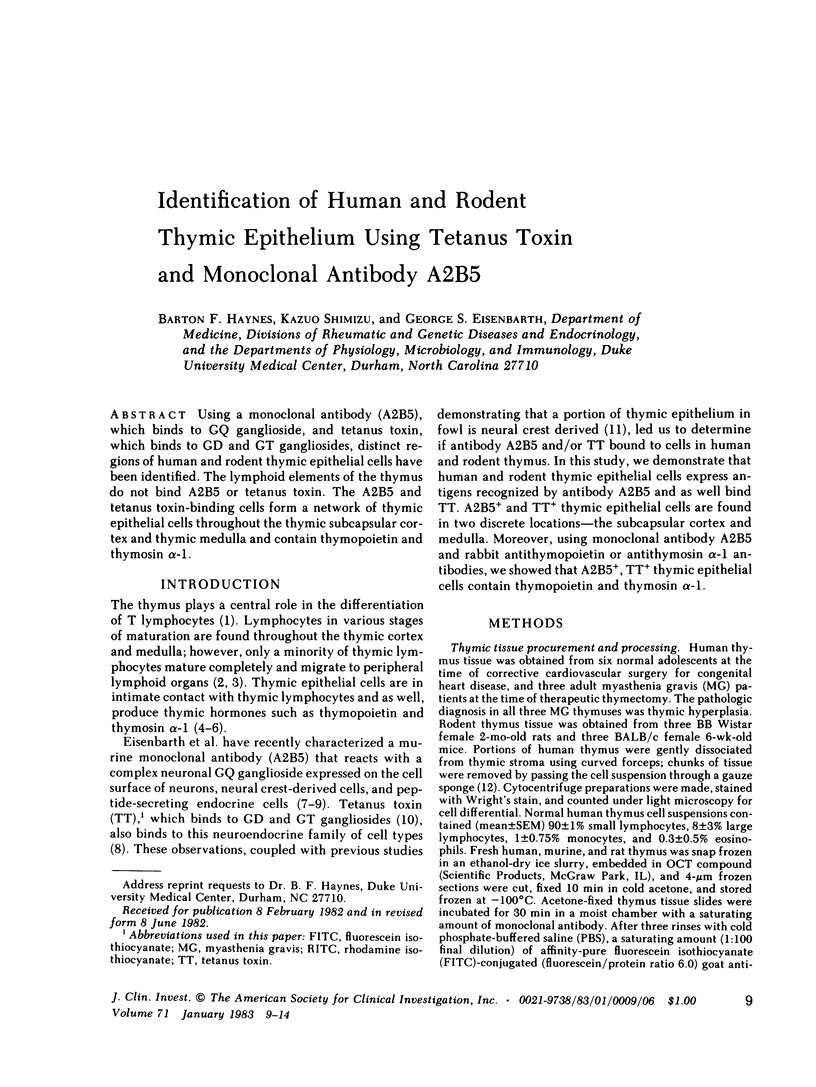
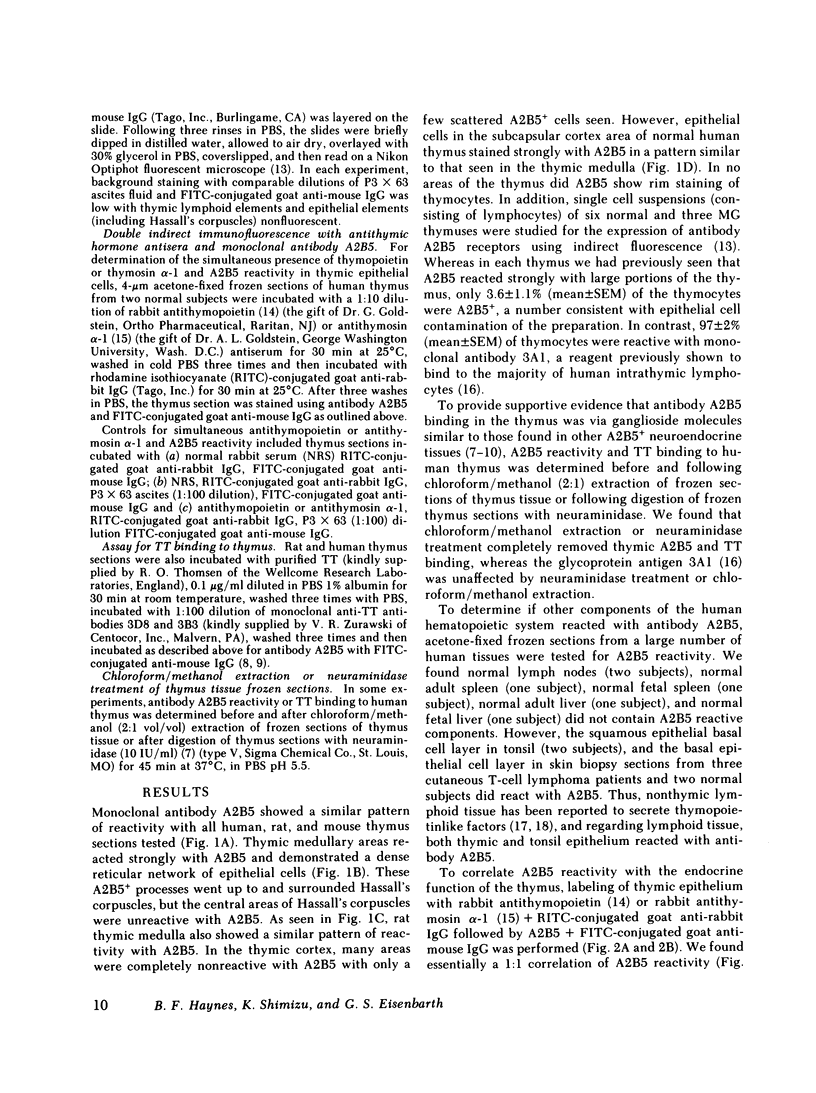
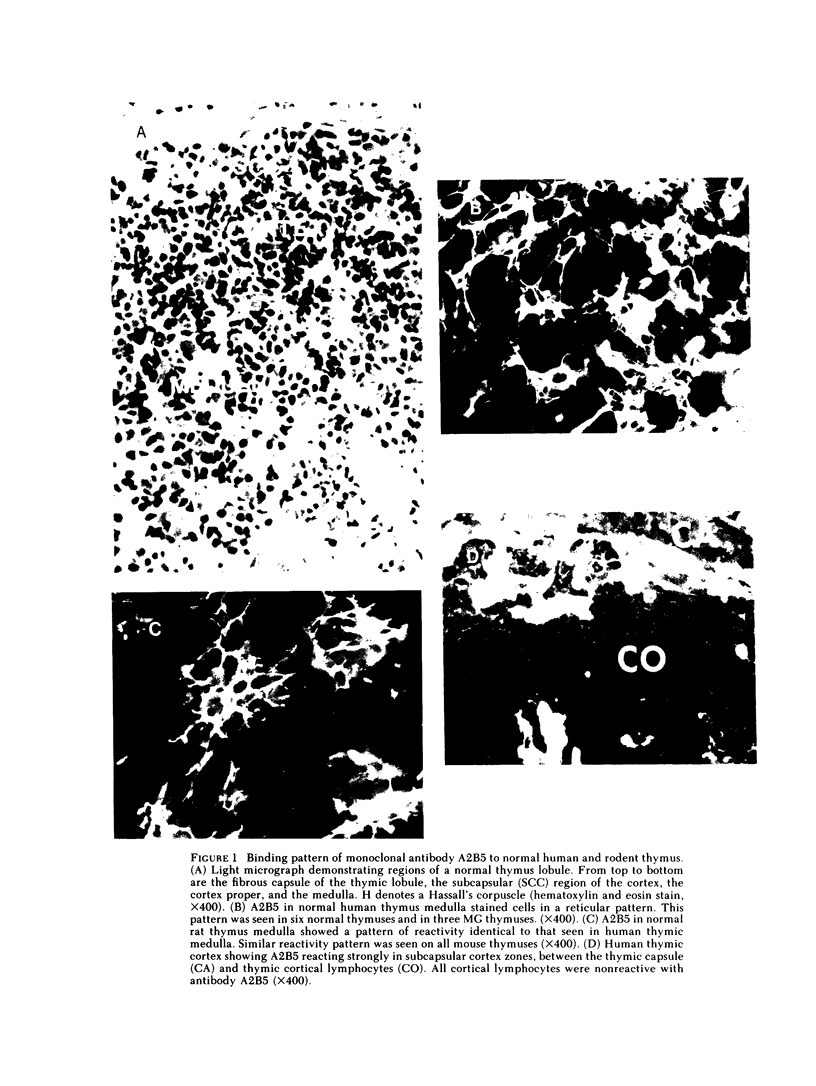
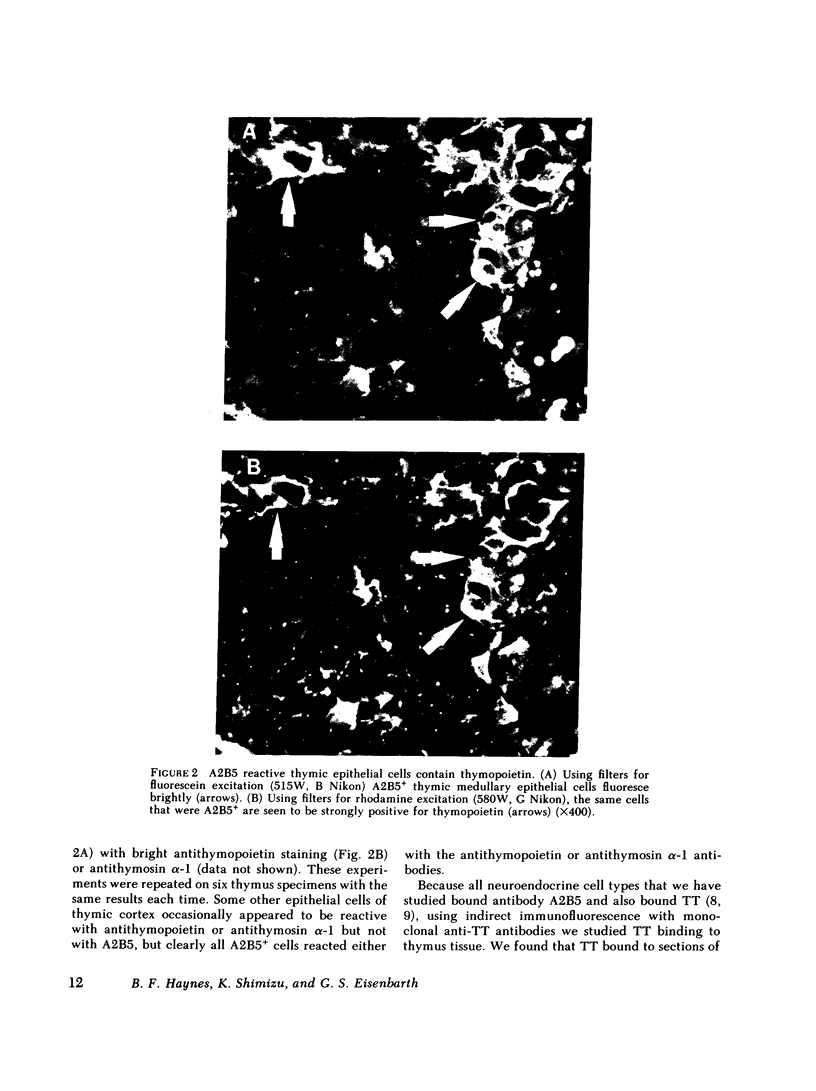
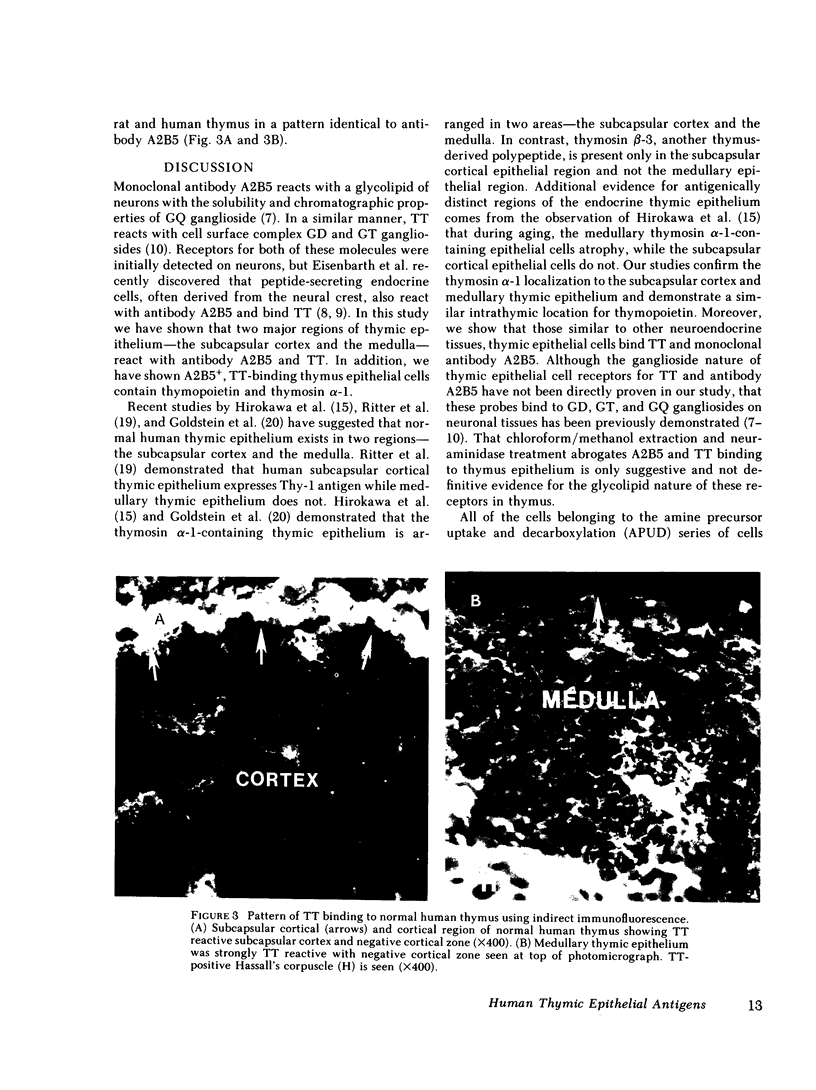
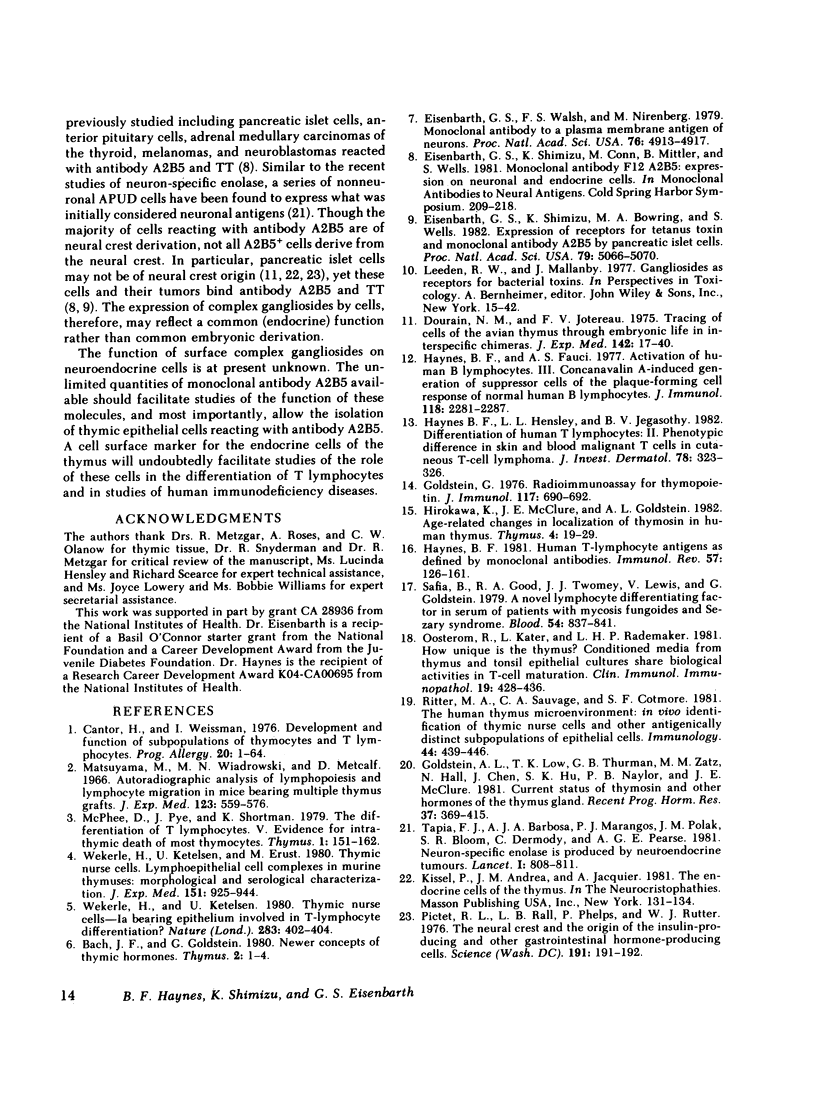
Images in this article
Selected References
These references are in PubMed. This may not be the complete list of references from this article.
- Cantor H., Weissman I. Development and function of subpopulations of thymocytes and T lymphocytes. Prog Allergy. 1976;20:1–64. [PubMed] [Google Scholar]
- Eisenbarth G. S., Shimizu K., Bowring M. A., Wells S. Expression of receptors for tetanus toxin and monoclonal antibody A2B5 by pancreatic islet cells. Proc Natl Acad Sci U S A. 1982 Aug;79(16):5066–5070. doi: 10.1073/pnas.79.16.5066. [DOI] [PMC free article] [PubMed] [Google Scholar]
- Eisenbarth G. S., Walsh F. S., Nirenberg M. Monoclonal antibody to a plasma membrane antigen of neurons. Proc Natl Acad Sci U S A. 1979 Oct;76(10):4913–4917. doi: 10.1073/pnas.76.10.4913. [DOI] [PMC free article] [PubMed] [Google Scholar]
- Goldstein A. L., Low T. L., Thurman G. B., Zatz M. M., Hall N., Chen J., Hu S. K., Naylor P. B., McClure J. E. Current status of thymosin and other hormones of the thymus gland. Recent Prog Horm Res. 1981;37:369–415. doi: 10.1016/b978-0-12-571137-1.50012-8. [DOI] [PubMed] [Google Scholar]
- Goldstein G. Radioimmunoassay for thymopoietin. J Immunol. 1976 Aug;117(2):690–692. [PubMed] [Google Scholar]
- Haynes B. F., Fauci A. S. Activation of human B lymphocytes. III. Concanavalin A-induced generation of suppressor cells of the plaque-forming cell response of normal human B lymphocytes. J Immunol. 1977 Jun;118(6):2281–2287. [PubMed] [Google Scholar]
- Haynes B. F., Hensley L. L., Jegasothy B. V. Differentiation of human T lymphocytes: II. Phenotypic difference in skin and blood malignant T-cells in cutaneous T-cell lymphoma. J Invest Dermatol. 1982 Apr;78(4):323–326. doi: 10.1111/1523-1747.ep12507406. [DOI] [PubMed] [Google Scholar]
- Haynes B. F. Human T lymphocyte antigens as defined by monoclonal antibodies. Immunol Rev. 1981;57:127–161. doi: 10.1111/j.1600-065x.1981.tb00445.x. [DOI] [PubMed] [Google Scholar]
- Hirokawa K., McClure J. E., Goldstein A. L. Age-related changes in localization of thymosin in the human thymus. Thymus. 1982 Jan;4(1):19–29. [PubMed] [Google Scholar]
- Le Douarin N. M., Jotereau F. V. Tracing of cells of the avian thymus through embryonic life in interspecific chimeras. J Exp Med. 1975 Jul 1;142(1):17–40. doi: 10.1084/jem.142.1.17. [DOI] [PMC free article] [PubMed] [Google Scholar]
- Matsuyama M., Wiadrowski M. N., Metcalf D. Autoradiographic analysis of lymphopoiesis and lymphocyte migration in mice bearing multiple thymus grafts. J Exp Med. 1966 Mar 1;123(3):559–576. doi: 10.1084/jem.123.3.559. [DOI] [PMC free article] [PubMed] [Google Scholar]
- McPhee D., Pye J., Shortman K. The differentiation of T lymphocytes. V. Evidence for intrathymic death of most thymocytes. Thymus. 1979 Nov;1(3):151–162. [PubMed] [Google Scholar]
- Oosterom R., Kater L., Rademakers L. H. How unique is the thymus? Conditioned media from thymus and tonsil epithelial cultures share biological activities in T-cell maturation. Clin Immunol Immunopathol. 1981 Jun;19(3):428–436. doi: 10.1016/0090-1229(81)90085-4. [DOI] [PubMed] [Google Scholar]
- Pictet R. L., Rall L. B., Phelps P., Rutter W. J. The neural crest and the origin of the insulin-producing and other gastrointestinal hormone-producing cells. Science. 1976 Jan 16;191(4223):191–192. doi: 10.1126/science.1108195. [DOI] [PubMed] [Google Scholar]
- Ritter M. A., Sauvage C. A., Cotmore S. F. The human thymus microenvironment: in vivo identification of thymic nurse cells and other antigenically-distinct subpopulations of epithelial cells. Immunology. 1981 Nov;44(3):439–446. [PMC free article] [PubMed] [Google Scholar]
- Safai B., Good R. A., Twomey J. J., Lewis V., Goldstein G. A novel lymphocyte differentiating factor in serum of patients with mycosis fungoides and Sezary syndrome. Blood. 1979 Oct;54(4):837–841. [PubMed] [Google Scholar]
- Tapia F. J., Polak J. M., Barbosa A. J., Bloom S. R., Marangos P. J., Dermody C., Pearse A. G. Neuron-specific enolase is produced by neuroendocrine tumours. Lancet. 1981 Apr 11;1(8224):808–811. doi: 10.1016/s0140-6736(81)92682-9. [DOI] [PubMed] [Google Scholar]
- Wekerle H., Ketelsen U. P., Ernst M. Thymic nurse cells. Lymphoepithelial cell complexes in murine thymuses: morphological and serological characterization. J Exp Med. 1980 Apr 1;151(4):925–944. doi: 10.1084/jem.151.4.925. [DOI] [PMC free article] [PubMed] [Google Scholar]
- Wekerle H., Ketelsen U. P. Thymic nurse cells--Ia-bearing epithelium involved in T-lymphocyte differentiation? Nature. 1980 Jan 24;283(5745):402–404. doi: 10.1038/283402a0. [DOI] [PubMed] [Google Scholar]



